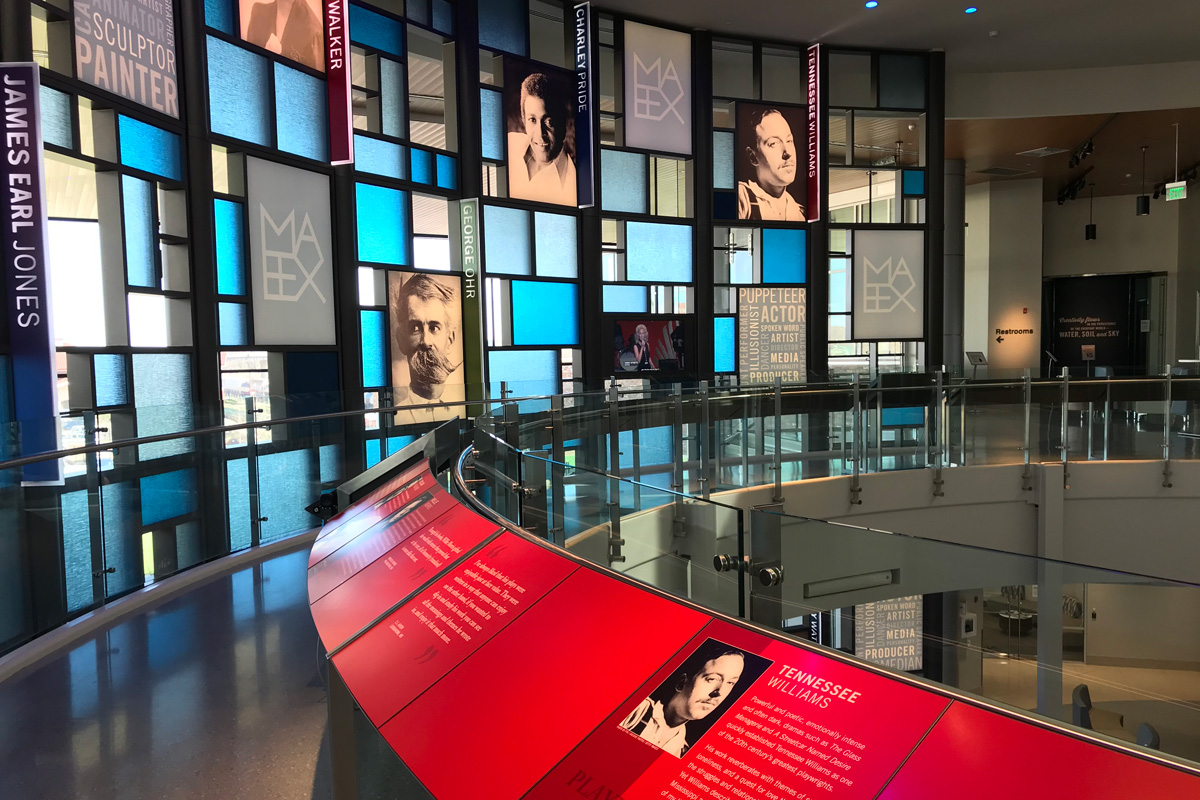MERIDIAN — If eyes offer a window to the soul, paintings may be a peek into the psyche. That’s the lasting impression from a collection of artworks by famed playwright and native Mississippian Tennessee Williams, now on display at The MAX, the Mississippi Arts + Entertainment Experience.
“Tennessee Williams: The Painter and the Playwright,” on view through April 11 at the Meridian facility, shows a surprising side of the literary master known for “The Glass Menagerie,” “A Streetcar Named Desire,” “Cat on a Hot Tin Roof” and more—showcases of raw emotion and classics of American theater and often, American film, too.
Columbus was his birthplace, Clarksdale figured in his childhood, and the Mississippi Delta left a lasting imprint that would surface in Williams’ works. But, it was at home in Key West, Fla.—a clapboard Bahamian cottage he bought in 1941—where he painted on the patio in the afternoons, following intense mornings at his typewriter in the “Mad House,” as he dubbed his one-room writing studio. “I amuse myself with painting,” Williams is quoted in a newspaper clipping on a text panel.
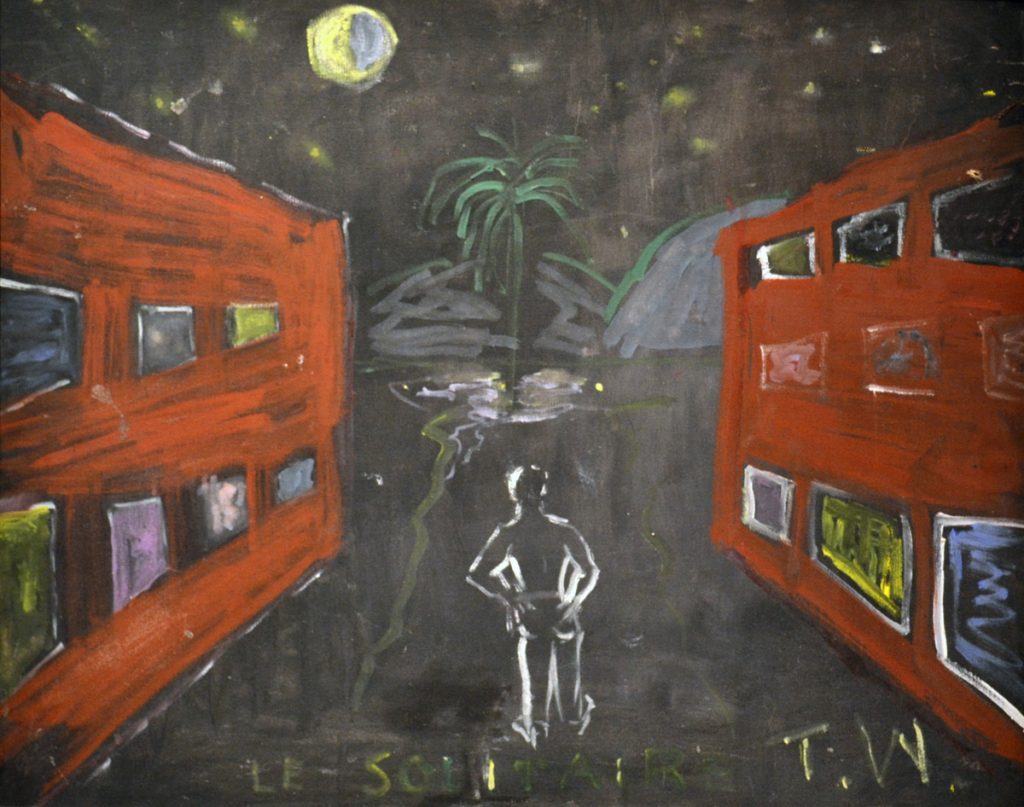
The artworks shed light on another side of the writer, who hit both the highs of international fame and success, and the lows of critical failure, alcohol and drug abuse, and depression. Often colored with light, bright hues easily associated with Key West, figures and scenes convey deeper connections and vulnerabilities. Literary and from-life references—to Williams’ own works and that of others, and to people both on the page and off—abound.
“Lament for the Moths,” named for Williams’ poem about fragile creatures in a world of mammoth figures, pictures a man prone and possibly trampled—an empathetic trigger to the suffering of a sensitive soul. “Le Solitaire,” a black hole of a painting, depicts a lone figure from behind, hands on his hips, on a narrowing street between rows of buildings. The darkest of the paintings in color and mood, it bears the weight of melancholy and a sense of paralysis.
A wicked sense of humor works in “A Child’s Garden of Roses,” depicting author Truman Capote as a baby with a gun. Red blooms are presumably gunshot wounds in the chests of other figures. The painting strikes back against an unfinished novel of Capote’s that had a thinly disguised effeminate caricature of Williams.
Michael York is rendered in a more angelic light. His side glance and bright countenance nod to the British actor’s stage and screen magnetism; the two worked together in the theater. The festive dandy of “Blaze of the Moment,” with his red bolero and hat, tight teal pants and boots, delights. In another work, of characters from Williams’ “The Roman Spring of Mrs. Stone,” their gazes (keen from the aging actress, and self-involved, almost bored from her gigolo lover) tell the story.
Enlarged photographs of Williams and a couple of artifacts—a gifted rosary with each bead assigned to a famous actress, and the writer’s dental bridge and mold—are also part of this exhibition.
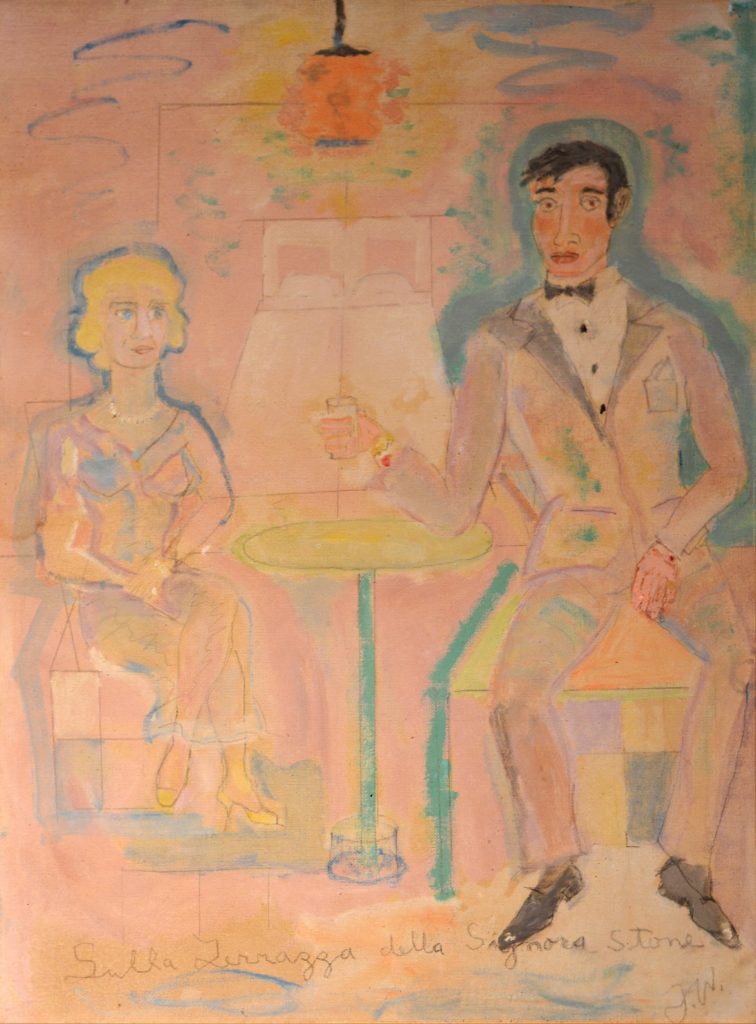
The MAX Curator of Exhibitions Stacey Wilson first saw the traveling exhibition in St. Louis. After joining the staff in Meridian, she wanted to bring it here. “I was surprised because I never knew that he painted, either, and I really liked the paintings,” she says, echoing a common response. “I wouldn’t compare them to Monet, but there’s a fragility, a shyness about it that I really enjoyed,” as well as the glimpse they give of the man behind the playwright, she added.
“It also speaks to mental health, and how writing and painting and the arts can help people cope with their mental health issues,” Wilson says. “A lot of these paintings just draw from his inner thoughts, from his life in Key West. … He still continued to write, still continued to travel, so he draws from those experiences, too—not through a pen but through a paintbrush.
“The fact that they represent another form of his expression—it means something. … They kind of tell the story of what he was going through, and what, maybe, he was thinking about with plays and his personal life,” she says.
A Target of Intolerance
Williams’ homosexuality made him a target of intolerance, and his painting “Citizen of the World III Set for Target Practice,” addresses that with its symbolic depiction of a young man tagged with numbers. Sexual themes often played a role in his literary works. A few more overt paintings are on display in the gallery, but curtained off so visitors will need to make a choice to view them.
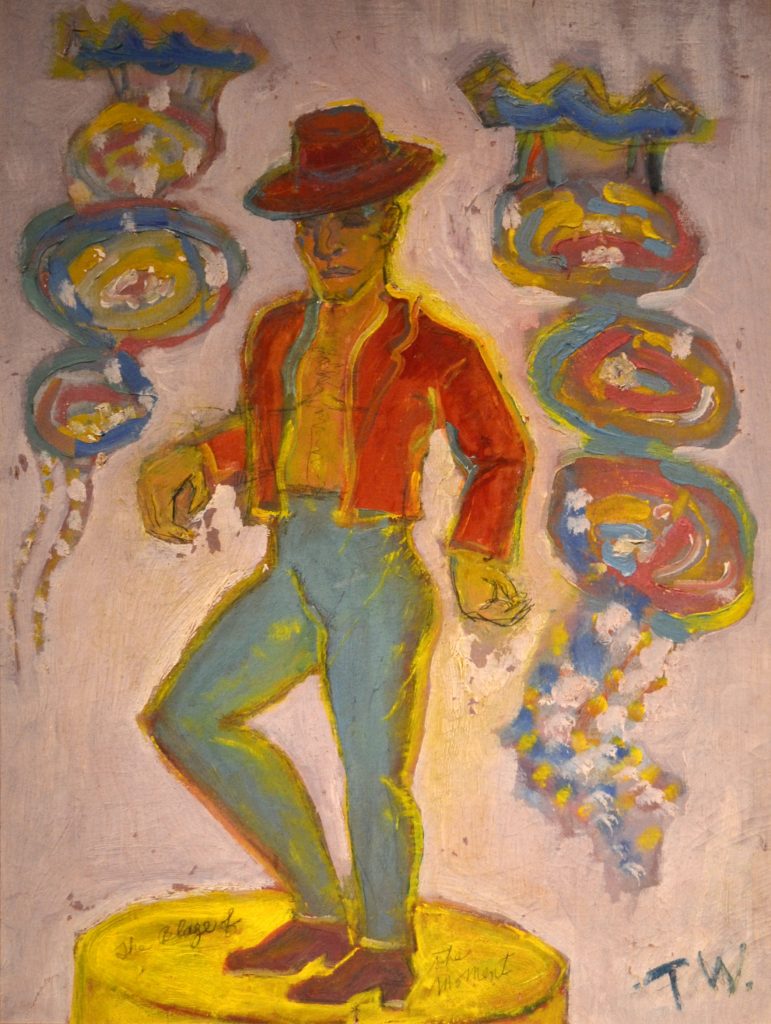
“Most museums collect objects and artwork and artifacts. We collect people and stories,” The MAX President/CEO Mark Tullos says. Williams was among the inaugural class of 18 inductees in The Max’s Hall of Fame (there are now 28). “It’s important for us to host highlight exhibitions on each one of those artists.
“This is a really important occasion for us to celebrate an aspect of this great author, who has an international following—an aspect of him that most people don’t even know about,” Tullos says. The Community Foundation of East Mississippi sponsored the exhibition at The MAX.
The Key West Art & Historical Society Curator Cori Convertito and developer/preservationist David Wolkowsky organized “Tennessee Williams: The Painter and the Playwright,” first displayed at its Custom House in December 2013. The 18 paintings, then on loan from Wolkowsky’s private collection, were left to the society when he died in 2018.
Wolkowsky, who was great friends with the playwright, is featured in the exhibition, in a video interview and in a portrait painted by Williams. Wolkowsky’s Key West hotel was a hub for visiting writers, and Williams was a fixture there. Conversations with Wolkowsky provided much of the exhibit’s rich detail, Convertito says, highlighting Wiliams’ connection to Key West.
‘Tennessee Williams Gets None of the Love’
“Because Tennessee Williams was tied to Key West for over 30 years, what we wanted to do was balance out all of the attention that Ernest Hemingway gets. He’s usually the writer people most associate with the island,” Convertito says, “and Tennessee Williams gets none of the love.” Williams’ paintings offer a catalyst to explore his contributions to Key West’s writing community. He paved the way for others, who’ve turned it into a bohemian writing enclave.
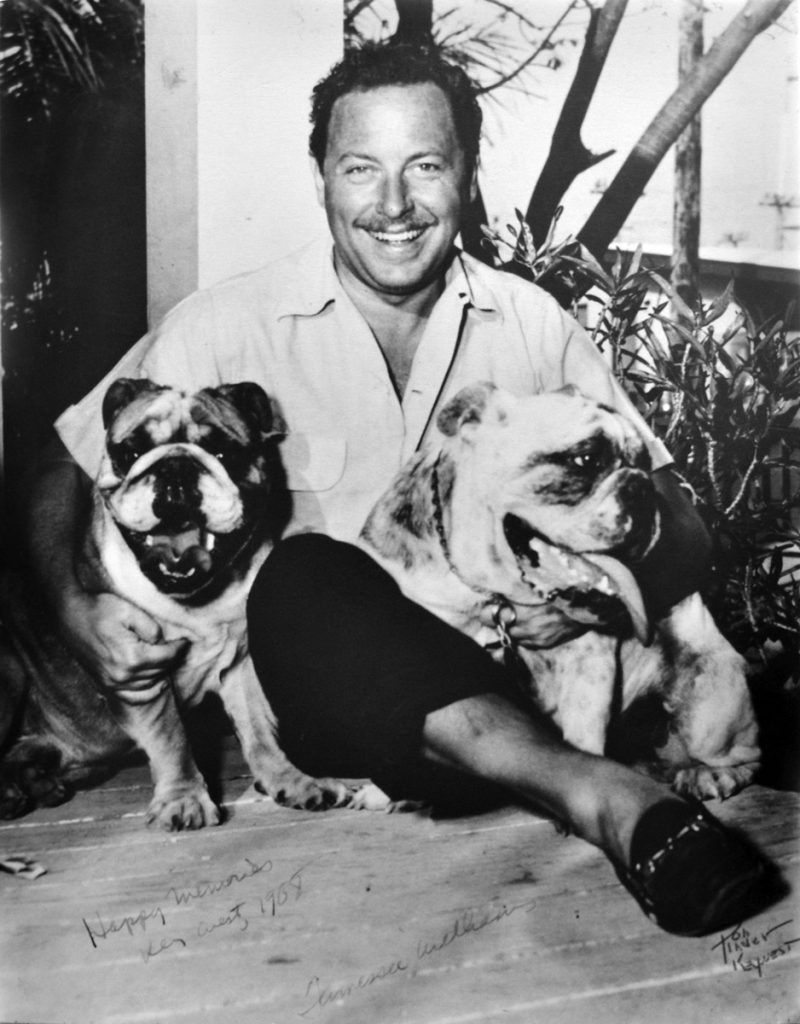
“He painted as recreation, and a way to escape, I think, his own mind in ways—particularly when he got into drinking and pills.”
Williams made meticulous notes in the margins of his plays, on lighting and costume, “a lot of detail work for a playwright to be including when productions went into Broadway and theaters in Chicago and Boston,” she says. “This is an extension in a way, putting paint to canvas about how he sees the character,” and even how he feels about them.
Convertito describes the paintings as “prisms,” through which facets of his life come through. “I think he painted what he was feeling at the moment. That provides, for me as a curator, an exciting insight into his brain.
“The longer I look at them, the more subtle details I pick up,” including religious imagery that might be missed at first glance. “The longer you spend with them, you start seeing more and more.”
For The MAX admission, hours and location details, visit msarts.org.

